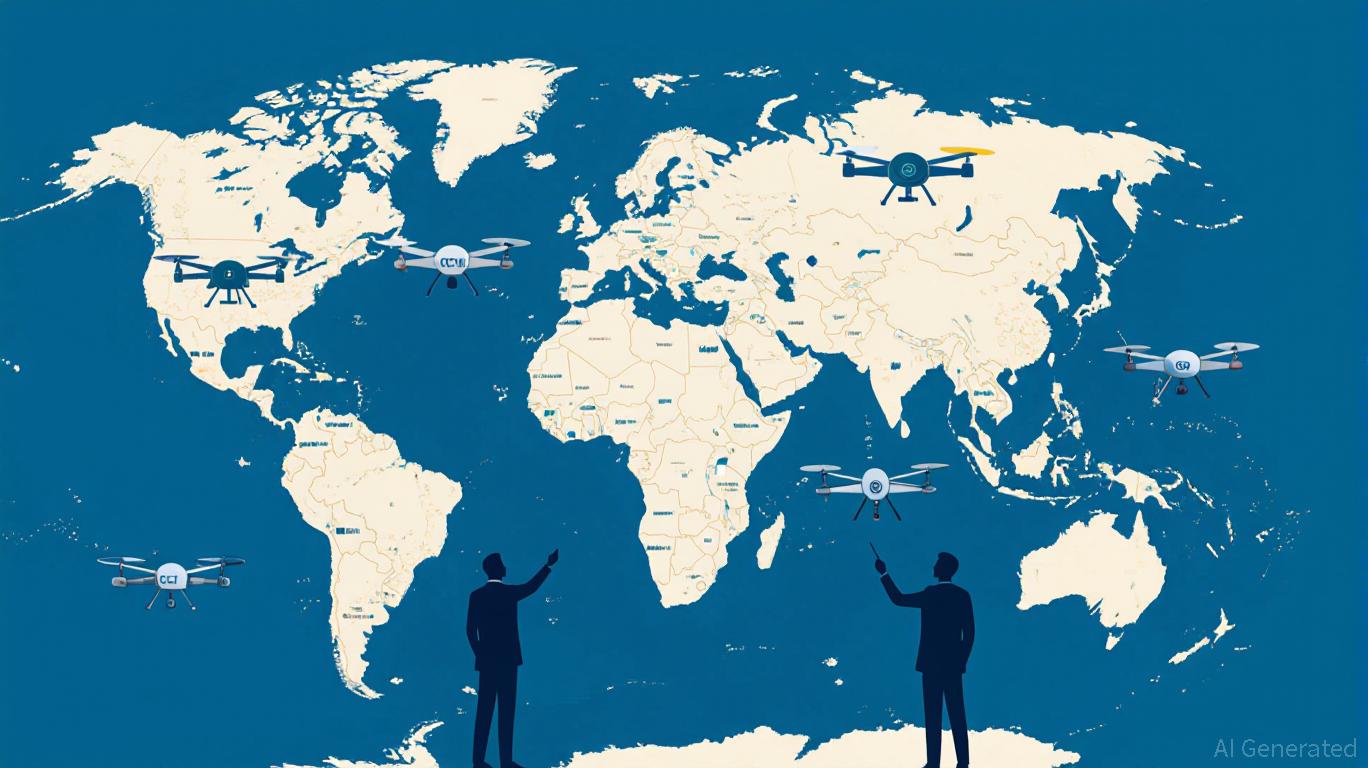The U.S. Drone Industry: Navigating Growth and Challenges

The U.S. drone industry finds itself at a unique crossroads, transformed by significant policy shifts in export regulations under both the Trump and Biden administrations. The reinterpretation of the Missile Technology Control Regime (MTCR) in 2020 has reshaped the landscape, allowing for increased exports of large military drones. This change has not only opened up new avenues for defense contractors but has also ignited discussions around geopolitical stability and ethical considerations.
Market Expansion and Strategic Gains for Defense Contractors
The global military drone market is forecasted to skyrocket from approximately $45.42 billion in 2025 to $96.6 billion by 2032. This surge is fueled by escalating defense budgets and the heightened need for real-time intelligence in conflict zones. Companies like General Atomics and Northrop Grumman are gearing up to seize this opportunity. General Atomics recently landed a staggering $30 billion contract with the U.S. Air Force to develop drone systems, including their cutting-edge YFQ-42A Collaborative Combat Aircraft (CCA), which aims for autonomous operations.
Similarly, Northrop Grumman is making strides with its hybrid vertical takeoff and landing (VTOL) platforms and boasts a $1.4 billion contract with Australia for MQ-4C Triton High-Altitude Long-Endurance UAVs, solidifying its footprint in the Asia-Pacific region.
The reinterpretation of the MTCR has directly impacted these companies, particularly for systems like the MQ-9 Reaper that have gained increased export approval. NATO allies in Europe and several Asian partners are now leveraging the Reaper for critical ISR (Intelligence, Surveillance, and Reconnaissance) missions. Northrop Grumman’s XQ-58A Valkyrie, designed for teamwork with advanced air combat fighters such as the F-22 and F-35, is also piquing interest from Middle Eastern nations keen to modernize.
Geopolitical Risks and Ethical Dilemmas
While the loosened export controls have bolstered U.S. competitiveness, they have raised alarms about drone proliferation. Critics warn that these relaxed policies might allow adversaries to access sensitive technologies, disguising them as space-launch systems. China’s rapid advancement in armed drone technology—coupled with its non-participation in the MTCR—has further diminished U.S. dominance in critical regions like the Middle East and Southeast Asia.
The U.S. has responded by expediting its own drone exports, but this could spawn a troubling “race to the bottom,” where allies prioritize financial advantages over ethical considerations. This dynamic prompts vital questions about accountability and usage, especially when human rights advocates voice concerns over incidents such as the deployment of MQ-9 Reapers by Saudi Arabia in Yemen, where civilian casualties have sparked international outcry.
Strategic Investment Opportunities
For investors, the expanding U.S. drone industry presents a compelling blend of growth and geopolitical influence. Major players like General Atomics and Northrop Grumman are not sitting idle; they’re investing heavily in next-gen technologies. General Atomics is reportedly focusing on AI-enhanced swarm drones and digital engineering to streamline production costs. Meanwhile, Northrop Grumman is pushing ahead with its B-21 Raider and RQ-180 stealth drone initiatives, which have the potential to revolutionize long-range strike capabilities.
However, prospective investors must also bear in mind the long-term risks associated with the proliferation of U.S. drones. Destabilization in conflict-prone areas could ignite retaliatory strikes from nations like China. Moreover, changing regulations—such as potential congressional pushback against the MTCR reinterpretation—might disrupt existing export channels. A balanced investment strategy could involve supporting firms with diversified portfolios and strong ethical governance frameworks.
Navigating a Complex Landscape
As we dive deeper into the evolving dynamics of the U.S. drone industry, it becomes clear that the redefined MTCR has carved out a lucrative path for defense contractors, generating significant revenue. Nonetheless, the strategic implications of these sales invite scrutiny regarding global security and ethical standards. The key for investors lies in identifying companies adept at maneuvering through this multifaceted landscape, balancing rapid innovation with a commitment to responsible practices.
As the market matures, the dialogue surrounding the ethical implications of drone technology and its reshaping of modern warfare will undoubtedly continue, compelling stakeholders to make choices that weigh profitability against conscience.

